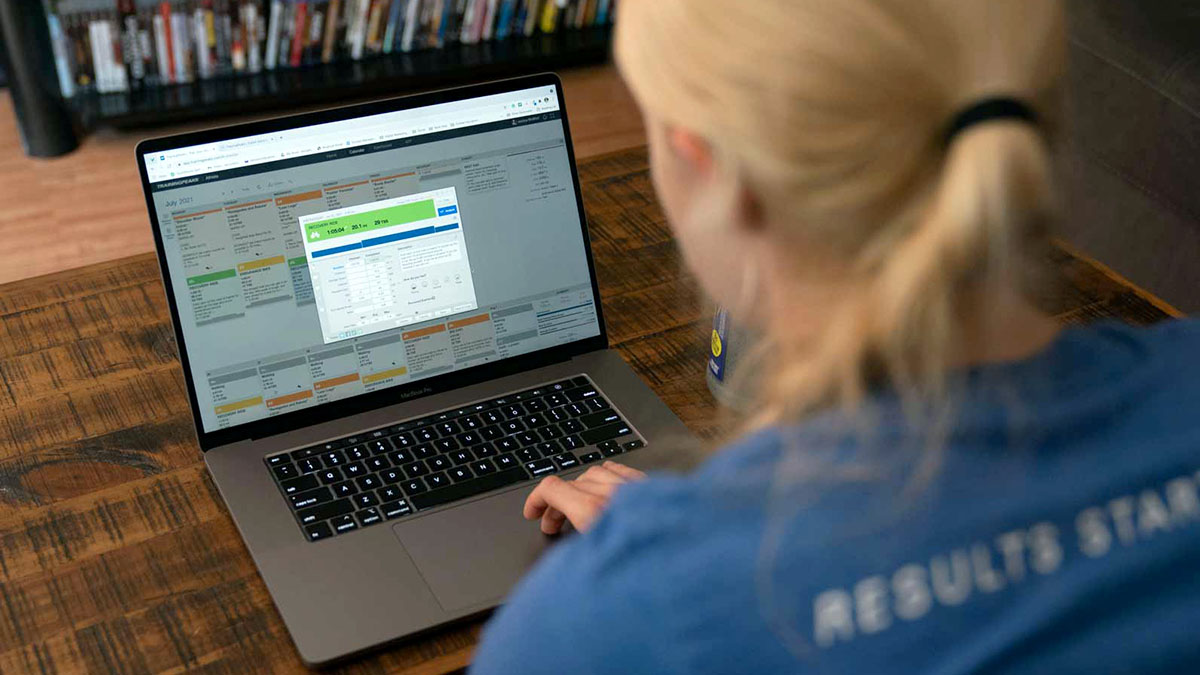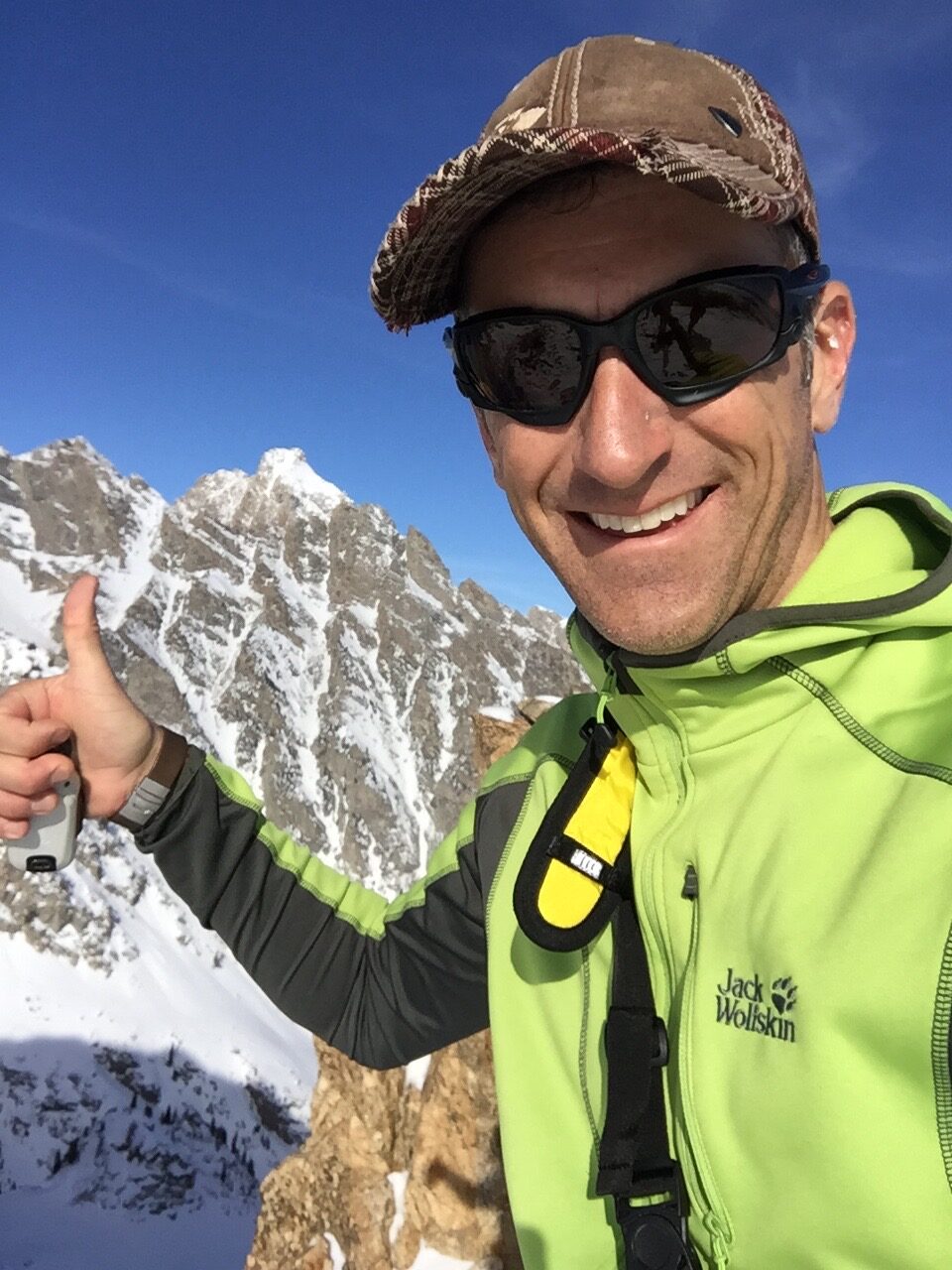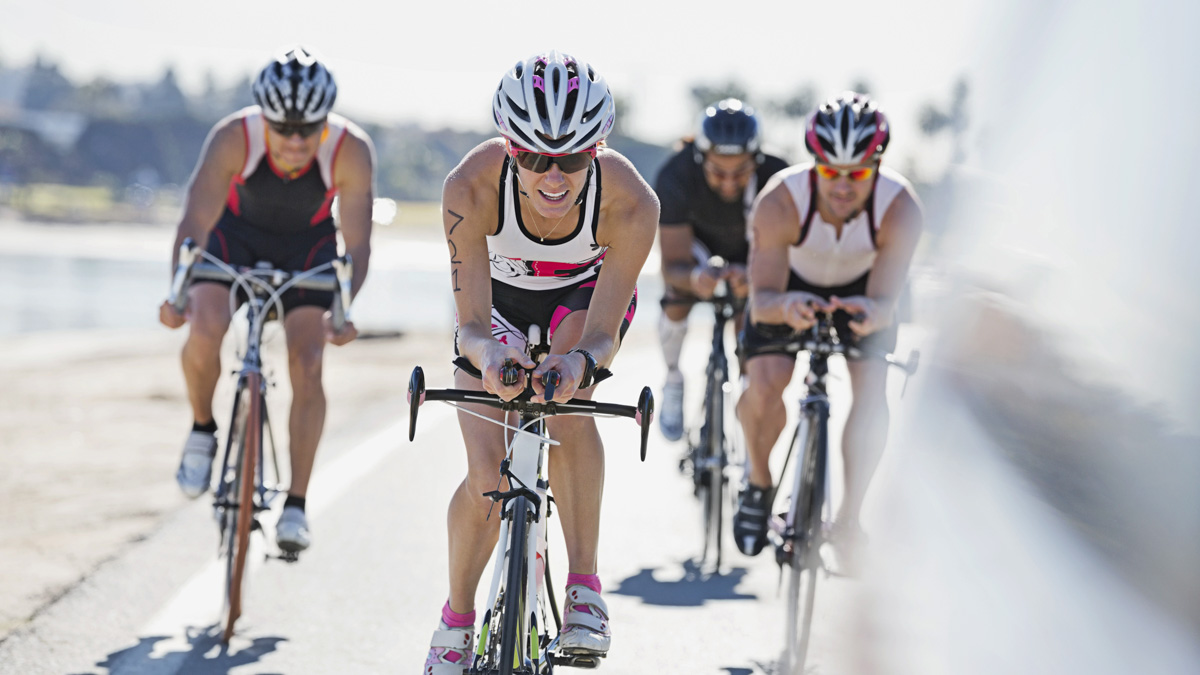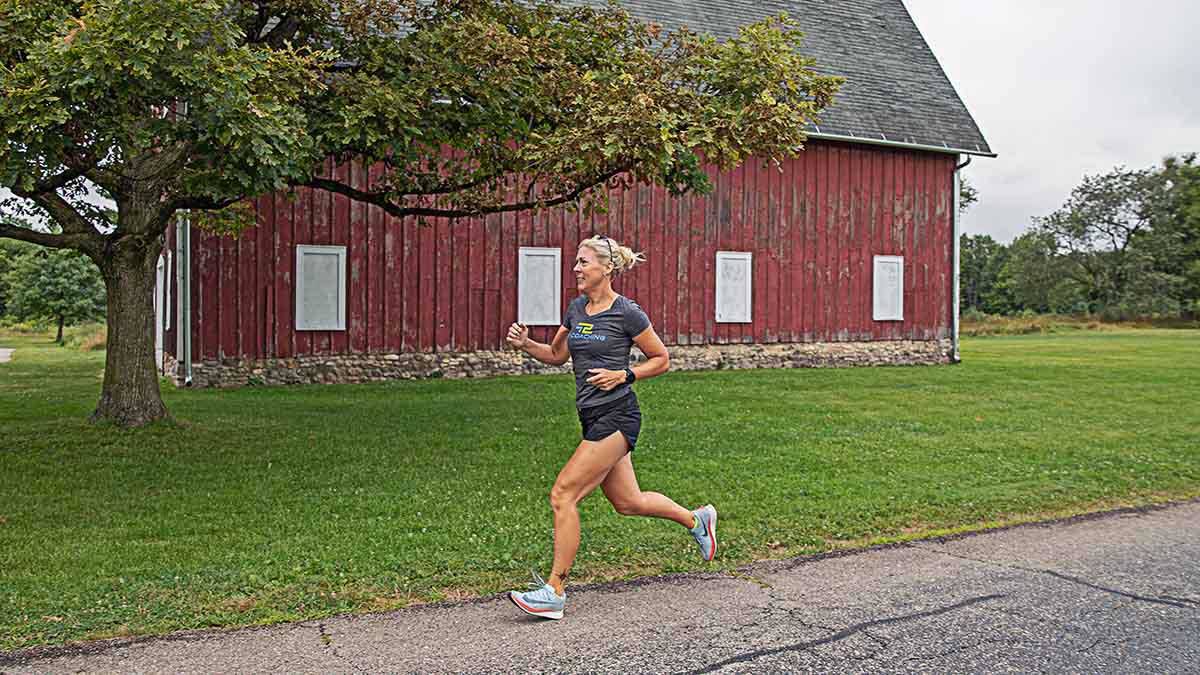Master’s competitors are having a moment in endurance sports. Per research published in Frontiers in Physiology, “the age of peak performance in endurance events generally increases as race distance increases.”[i] This not only means that the median age of the top finishers at Kona and in other Ironman, marathon and ultra events is going up but also that there’s been a significant increase in participation and achievement in the 60+ age bracket. At the 2023 USATF 100 Mile Road National Championships, there were five male entrants in the 80+ age group, while Yolanda Holder (64), Yen Nguyen (60), and Louise Mason (69) dominated the 60-64 and 65-69 age groups. Let’s look at what you need to consider when coaching athletes aged 60 and older to train, perform, and recover.
Covering All the Assessment Bases
As with clients of any age, to help older athletes plan what to do next, you first need to evaluate where they’re at now and what they’ve done before they come to you for coaching. I reached out to Lawrence Herrera, owner of The Performance Ranch in Albuquerque, New Mexico, to find out what he’s looking for in an initial evaluation.
“The intake process for a 60+ client is very similar to every other athlete unless it’s a referral from a doctor or PT for a specific issue,” he said. “We do a Functional Movement Screen, modifying it to only four movements if the athlete has restrictions. Then we measure their body composition using InBody and have them do a five-minute max aerobic power test to see how far they can go and what their heart rate recovery is like a minute later. Then for some, we do a ramp test and, if they have ambitious endurance goals, we measure their VO2 max.”
Herrera and his fellow coaches use the built-in testing protocol on the Wattbike to perform the ramp test and assess maximum or sub-maximum capacity. This takes the client through one-minute stages that progressively get harder until they can’t go anymore and gives a predicted VO2 max if they were able to go through a minimum of five stages. In a recent episode of the Huberman Lab podcast, Dr. Andy Galpin shared that we lose about 10% of our max oxygen uptake per decade after age 50. He cited a study from the Karolinska Institute in Sweden, which showed that participants who were competitive skiers in the 1940s and 1950s and kept competing in endurance sports were fitter and healthier than their peers, with one 92-year-old recording a VO2 max score of 38, which could be a world record for that age.[ii] “By knowing what someone’s VO2 max is today, I can help them train better tomorrow and continue to stay healthy well into old age,” Herrera added.
He also evaluates basic strength by asking the new client to do 10 pushups and watches how well they move through different patterns. “If someone is a longtime endurance athlete, they’re typically tight in the ankles and hips, as well as the thoracic spine and shoulders if they’re used to spending hours slumped over race bike handlebars. We also see a lot of older folks who are weak in the posterior chain and lack core strength, which gives us two more things to work on. They might not just lack muscle strength, but also stability and control.”
Outside of these more objective tests, the Performance Ranch team asks for training and injury histories, assesses current pain points and injuries, and finds out what an athlete’s goals are. “Most of our athletes are 50+, and it’s rare that they come to us saying, ‘I’m doing great,’” Herrera said. “They’re typically hurting – whether that’s an acute or chronic injury – or don’t have the capacity to reach whatever target they’re aiming for.”
Mitigating Muscle Loss in Older Athletes
In addition to athletes’ aerobic capacity dwindling over time, as the Karolinska Institute study showed, older clients also struggle to maintain strength and power. This is partly due to sarcopenia, aka age-related muscle loss.[iii] An article by Tufts Now stated that “Researchers estimate that, generally, those between ages 60 and 70 have lost 12% of their muscle mass, with those over 80 having lost 30%.”[iv] This cannot only compromise exercise performance but also increase fall risk (the No. 1 reason why older folks end up in assisted living or nursing home facilities) and compromise the quality of life.
That’s why Herrera recommends his older clients devote at least two sessions a week to strength work. “For this age bracket, resistance training is about stimulating the nervous system, building muscle tissue, and helping them live a more robust, capable lifestyle,” he said.
Leading up to and during race season, full-body workouts target preserving muscle mass, making connective tissues like ligaments and tendons more durable, and taking joints through full ranges of motion. Herrera also adds a hypertrophy block in the offseason designed to increase muscle mass. “The InBody scale we use does a good job of telling us how much lean muscle mass an older client has currently and gives an age-specific target range that we can help them reach,” he said.
Strength training at The Performance Ranch focuses on the major movement patterns: hinge, squat, push, pull, carry, walk and run. These start with bodyweight variations (which are scaled back if needed, such as using a TRX Suspension Trainer for assisted squatting in the gym and sink squats, whereby a client holds onto their kitchen sink at home) and then adding weight once the client demonstrates movement competence. Due to the posterior chain strength deficits he often sees, Herrera typically prescribes a 3:1 ratio of pulling to pushing exercises to older athletes.
Tailoring Endurance Training for 60+
When it comes to developing endurance athletes, Herrera knows his stuff, having competed in endurance events like MTB races and Xterra triathlons for the past 17 years. He has found that hard-charging older clients often fail to build in sufficient recovery between sessions to obtain the training gains they seek. “Recovery is even more important as endurance athletes age,” he said. “Unless they’re elite, most can’t put together back-to-back hard days anymore. If they’re a runner, they might want to mix in more cross-training to reduce repetitive strain, or if they’re a cyclist, they may need more recovery rides than they used to when they were younger.”
To assess where an older athlete is at with their recovery on any given day, Herrera uses a subjective survey in TrainHeroic to evaluate their sleep, soreness and other indicators subjectively. If the client uses a wearable, he factors this and objective data from TrainingPeaks to decide whether to proceed with the planned workout or change it.
“If we’re intending to do a power day or something else that’s demanding for the nervous system and the athlete hasn’t slept well, is sore or is feeling fatigued, we’ll switch it up and reduce the intensity,” Herrera said. “Active recovery modalities like a sauna or hot tub soak, massage, and mobility are also beneficial for older athletes. Older athletes often have more time than clients with young families who are in the prime of their careers, and also have more time for sleeping and recovering between sessions.”
To help effectively manage load exposure and mileage for older athletes, the team at The Performance Ranch uses Joe Friel’s nine-day training cycle instead of the usual seven-day block. “Applying a nine or 10-day cycle means a client might get in six hard interval training sessions in a month rather than eight, which is actually preferable in most cases to avoid overtraining,” Herrera said. “We’ll fit these in with lactate threshold, tempo and VO2 max sessions, depending on their current capacity and future goals, plus a minimum of two strength workouts per week.”
Leading up to a race, Herrera follows a similar preparation approach as with his younger athletes, starting to taper mileage volume two weeks beforehand so clients feel rested and avoiding the temptation to play catchup if they’ve only had a short training block to get ready. “The biggest boost older athletes get from a tailored pre-race plan is usually mental,” he said. “If they’re pain-free, know they can hold their target pace and are feeling physically strong, they’ll get to the start line with confidence.”
Knowing Nutrition and Hydration Needs
Nutrition and hydration are two other areas in which you can help your 60+ clients make improvements. It’s all very well creating a well-balanced training program and promoting adequate recovery, but your older athletes also need to be eating and drinking right. According to a 2019 study in The Journal of Nutrition, Health & Aging, almost half of older people aren’t getting enough protein.[v] Endurance athletes’ protein needs are sometimes 20% or greater than those of sedentary people, and “older athletes (>55-60 years old) require more protein to achieve the same effect due to the progressive loss of muscle mass associated with the aging process,” according to a post by sports nutritionist Susan Kitchen.[vi]
“Inadequate protein intake is the biggest nutrition issue I see in older clients, particularly women,” Herrera said. “We have a nutrition coach who educates them on how to get more, whether that’s through food sources like eggs and meat or supplementation if needed.”
Another issue some of your 60+ athletes might be dealing with is hydration. Our thirst mechanism declines over time, so a drink-to-thirst strategy is likely insufficient in this age group – much as with children, who don’t have the same urge to drink as young adults do. This is where you can help create a plan for before, during, and after training and races.
“We see older athletes cramping a lot at night when they first start a new training plan,” Herrera said. “This is because they’re either not drinking enough, consuming too little sodium and other electrolytes, or both. I’ve had some clients tell me they only drink two 16-ounce water bottles per day, which is nowhere near enough.”
As a general rule of thumb, Herrera recommends that all clients consume at least an ounce of water for every kilogram of bodyweight, adding more depending on their training duration and intensity and the heat and humidity level. He also ensures that they have adequate fuel with them to power longer runs and rides, as this is another area in which older athletes sometimes underestimate their needs.
Cultivating Community
While it’s easy to get down in the weeds when programming for your older clients, there are other important considerations for this age group. One of them is community. A study on happiness that Harvard University has been conducting for 85 years has found that while exercise and diet are crucial to overall well-being, so too is community, particularly as people age. “The surprising finding is that our relationships and how happy we are in our relationships has a powerful influence on our health,” said Robert Waldinger, director of the study, a psychiatrist at Massachusetts General Hospital, and a professor of psychiatry at Harvard Medical School in an article for The Harvard Gazette.[vii] “Taking care of your body is important, but tending to your relationships is a form of self-care too. That, I think, is the revelation.”
So how does this apply to your older client base? As we shared in a recent piece, the 2022 Strava Year in Sport survey found that endurance athletes increase their training time and distance when in pairs and groups, and cyclists even go faster when they’re part of a pack. The Harvard happiness study demonstrates that your 60+ clients won’t merely ride and run faster and farther if they’re doing it together but could also extend their longevity, increase vitality, and get more joy out of life.
“Community is one of our five pillars at The Performance Ranch,” Herrera said. “People who live to be 100 are almost always part of tight-knit groups. We act as a resource to direct older clients to local bike and running stores that have group runs and rides for different age brackets and ability levels. Signing up can help them become happier and healthier and rekindle the sense of belonging they often lose after retiring.”
References
[i] Romuald Lepers and Paul J Stapley, “Master Athletes Are Extending the Limits of Human Endurance,” Frontiers in Physiology, December 12, 2016, available online at https://www.frontiersin.org/articles/10.3389/fphys.2016.00613/full.
[ii] “Guest Series | Dr. Andy Galpin: How to Assess & Improve All Aspects of Your Fitness,” Huberman Lab, available online at https://hubermanlab.com/dr-andy-galpin-how-to-assess-improve-all-aspects-of-your-fitness.
[iii]“Preserve Your Muscle Mass,” Harvard Health, February 19, 2016, available online at https://www.health.harvard.edu/staying-healthy/preserve-your-muscle-mass.
[iv] Roger Fielding, “Muscle Loss in Older Adults and What to Do About It,” Tufts Now, February 9, 2021, available online at https://now.tufts.edu/2021/02/09/muscle-loss-older-adults-and-what-do-about-it.
[v] J. L. Krok-Schoen, “Low Dietary Protein Intakes and Associated Dietary Patterns and Functional Limitations in an Aging Population: A NHANES Analysis,” The Journal of Nutrition, Health & Aging, February 19, 2019, available online at https://link.springer.com/article/10.1007/s12603-019-1174-1.
[vi]Susan Kitchen, “Protein for Endurance Athletes – Quantity, Timing, and Sources Explained,” RaceSmart, September 19, 2018, available online at https://www.racesmart.com/blog/2018/09/protein-for-endurance-athletes-explained.
[vii] Liz Mineo, “Good Genes are Nice, But Joy is Better,” The Harvard Gazette, April 11, 2017, available online at https://news.harvard.edu/gazette/story/2017/04/over-nearly-80-years-harvard-study-has-been-showing-how-to-live-a-healthy-and-happy-life.









